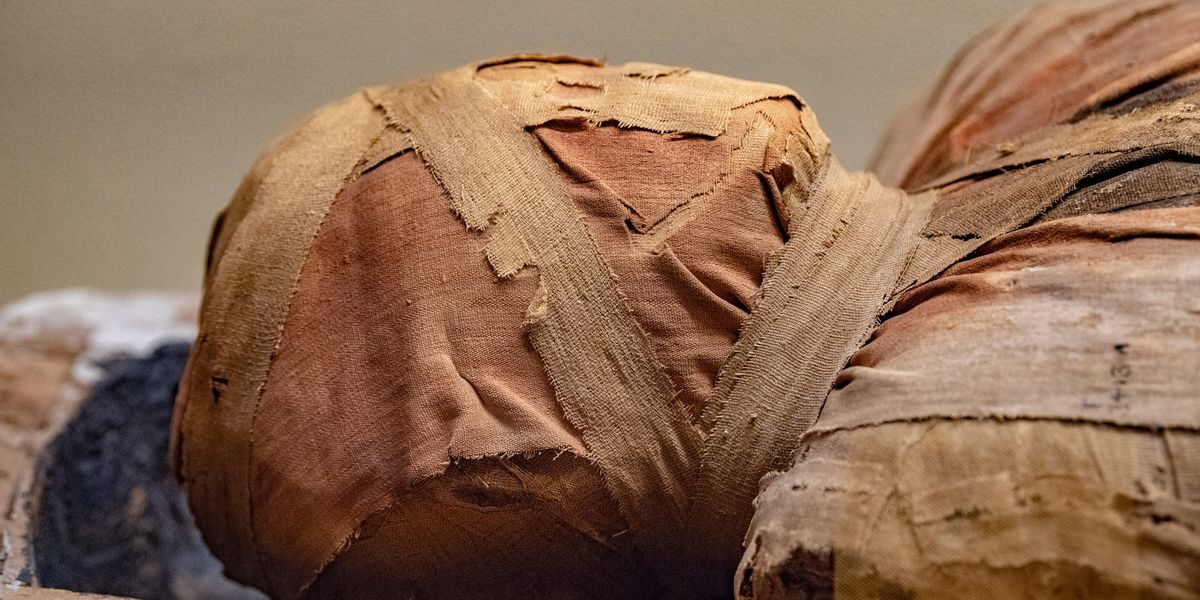Experts have narrowed down the origins of mysterious mummies found in the Chinese desert, and the results are quite surprising.
Most of us typically associate mummification with Ancient Egypt, but the remains of other mummified objects have been found across the world. In Peru, experts were left baffled by the discovery of mummified “non-human” remains that had just three fingers.
The discovery of hundreds of human mummies in the deserts of China’s Xinjiang Uyghur Autonomous Region equally confused experts, who have now used the genetic data to determine their origins.
They were found located off the Silk Road in the Tarim Basin but left experts confused due to their unusual traditions and appearance that seemed out of place for the region.
Dating from between 2,000 BCE to 200 CE, the mummies possessed “Western” features and wore colourful wool clothing. Alongside them were indicators of a farming culture, including animals like cattle, sheep and goats, as well as food products like wheat, barley and cheese. The mummies were discovered buried in boat-shaped coffins which were covered with cow hides.
In a new study in the Nature journal, researchers analysed the genetic data gathered from 13 of the earliest known Tarim Basin mummies. They date back to 2,100 to 1,700 BCE and have revealed where the people came from.
The results showed the mummies were direct descendants of the Ancient North Eurasians – a group of hunter-gatherers who occupied the north Eurasian steppe and Siberia. They are a group that disappeared approximately 10,000 years ago despite being quite widespread before that.
Genetics of Ancient North Eurasians can still be found in some populations of Indigenous groups in Siberia and the Americas today.
The study contradicted theories that the group were herders from the Black Sea region of southern Russia, Central Asians, or early farmers on the Iranian Plateau, and suggested that they had been there for some time and had a clear local ancestry.
Christina Warinner, a study author, professor of Anthropology at Harvard University and research group leader at the Max Planck Institute for Evolutionary Anthropology, said in a statement: “Despite being genetically isolated, the Bronze Age peoples of the Tarim Basin were remarkably culturally cosmopolitan – they built their cuisine around wheat and dairy from the West Asia, millet from East Asia, and medicinal plants like Ephedra from Central Asia.”

 www.indy100.com
www.indy100.com
Most of us typically associate mummification with Ancient Egypt, but the remains of other mummified objects have been found across the world. In Peru, experts were left baffled by the discovery of mummified “non-human” remains that had just three fingers.
The discovery of hundreds of human mummies in the deserts of China’s Xinjiang Uyghur Autonomous Region equally confused experts, who have now used the genetic data to determine their origins.
They were found located off the Silk Road in the Tarim Basin but left experts confused due to their unusual traditions and appearance that seemed out of place for the region.
Dating from between 2,000 BCE to 200 CE, the mummies possessed “Western” features and wore colourful wool clothing. Alongside them were indicators of a farming culture, including animals like cattle, sheep and goats, as well as food products like wheat, barley and cheese. The mummies were discovered buried in boat-shaped coffins which were covered with cow hides.
In a new study in the Nature journal, researchers analysed the genetic data gathered from 13 of the earliest known Tarim Basin mummies. They date back to 2,100 to 1,700 BCE and have revealed where the people came from.
The results showed the mummies were direct descendants of the Ancient North Eurasians – a group of hunter-gatherers who occupied the north Eurasian steppe and Siberia. They are a group that disappeared approximately 10,000 years ago despite being quite widespread before that.
Genetics of Ancient North Eurasians can still be found in some populations of Indigenous groups in Siberia and the Americas today.
The study contradicted theories that the group were herders from the Black Sea region of southern Russia, Central Asians, or early farmers on the Iranian Plateau, and suggested that they had been there for some time and had a clear local ancestry.
Christina Warinner, a study author, professor of Anthropology at Harvard University and research group leader at the Max Planck Institute for Evolutionary Anthropology, said in a statement: “Despite being genetically isolated, the Bronze Age peoples of the Tarim Basin were remarkably culturally cosmopolitan – they built their cuisine around wheat and dairy from the West Asia, millet from East Asia, and medicinal plants like Ephedra from Central Asia.”

Archaeologists discover mysterious mummies in Chinese desert
Experts have narrowed down the origins of mysterious mummies found in the Chinese desert, and the results are quite surprising.Most of us typically associate mummification with Ancient Egypt, but the remains of other mummified objects have been found across the world. In Peru, experts were left...
 www.indy100.com
www.indy100.com


 . I'm sure a few Japanese sites have something on that, lol
. I'm sure a few Japanese sites have something on that, lol